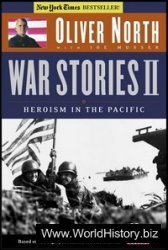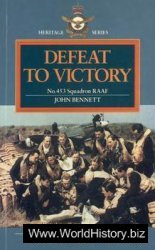Linguistic handicaps as well as the general unavailability of Vietnamese archival documentation give a regrettably skewed quality to any bibliographic essay published in the West. Although there are signs of change (on both counts), the process will be slow.
Still the most comprehensive treatment of the whole 1945-75 era is the vivid and journalistic account by Stanley Karnow, Vietnam: A History (New York: Viking Press, 1983), which in key respects holds up well. David W. P. Elliott, The Vietnamese War: Revolution and Social Change in the Mekong Delta, 1930-1975, 2 vols. (Armonk, NY: M. E. Sharpe, 2003), is a superb in-depth examination of the struggle in a single province in southern Vietnam. Other general histories include A. J. Langguth, Our Vietnam: The War, 1954-1975 (New York: Simon & Schuster, 2000), Marilyn Young, The Vietnam Wars, 1945-1990 (New York: Harper Collins, 1990), and George C. Herring, America’s Longest War: The United States and Vietnam, 1950-1975, 4th ed. (New York: McGraw-Hill, 2001). Robert J. McMahon, The Limits of Empire: The United States and Southeast Asia since World War II (New York: Columbia University Press, 1999), helpfully examines American policy in a broader regional context. Also useful on the entire period is Spencer Tucker (ed.), Encyclopedia of the Vietnam War: A Political, Social, and Military History, 3 vols. (New York: Oxford University Press, 1999), and Gareth Porter (ed.), Vietnam: The Definitive Documentation of Human Decisions, 2 vols. (Ithaca, NY: Cornell University Press, 1993).
The French war in Indochina has received comparatively less attention (including among French historians) than the American one that followed. See Yves Gras, Histoire de la guerre d’Indochine (Paris: Plon, 1992), Alain Ruscio, La Guerre franfaise d’Indochine (Paris: Complexe, 1992), Philippe Devillers, L’Histoire du Viet-Nam de 1940 a 1952 (Paris: Le Seuil, 1952), Hugues Tertrais, Le piastre et le fusil: Le cout de la guerre d’Indochine 1945-1954 (Paris: Comite pour l'histoire economique et financiere de la France, 2002), and Mark A. Lawrence and Fredrik Logevall (eds.), The First Vietnam War: Colonial Conflict and Cold War Crisis (Cambridge, MA: Harvard University Press, 2007). On early US involvement, the best recent studies are Mark Philip Bradley, Imagining Vietnam and America: The Making of Postcolonial Vietnam, 1919-1950 (Chapel Hill, NC: University of North Carolina Press, 2000), and Mark Atwood Lawrence, Assuming the Burden: Europe and the American Commitment to War in Vietnam (Berkeley, CA: University of California Press, 2005). For the climactic battle of Dien Bien Phu, two classic accounts are Bernard Fall, Hell in a Very Small Place: The Siege of Dien Bien Phu (New York: J. B. Lippincott, 1967), and Pierre Rocolle, Pourquoi Dien Bien Phu? (Paris: L'Histoire Flammarion, 1968). For the wider regional context of the Indochinese developments in these years, see Christopher Goscha, Thailand and the Vietnamese Networks of the Vietnamese Revolution, 1885-1954 (London: Routledge, 1999).
The "interregnum” after 1954 is covered well in several books, but see especially David L. Anderson, Trapped By Success; The Eisenhower Administration and Vietnam (New York: Columbia University Press, 1991), Kathryn Statler, Replacing France: The Origins of American Intervention in Vietnam (Lexington, KY: University Press of Kentucky, 2007), George McT. Kahin, Intervention: How America Became Involved in Vietnam (New York: Knopf, 1986), and Seth Jacobs, America’s Miracle Man in Vietnam: Ngo Dinh Diem, Religion, Race, and U. S. Intervention in Southeast Asia, 1950-1957 (Durham, NC: Duke University Press, 2004).
American involvement in Indochina expanded steadily after 1961 and so, as a result, has the literature on this later period. A hugely influential early account was David Halberstam's mesmerizing, sprawling The Best and the Brightest (New York: Random House, 1972). On decisionmaking in the Kennedy and Johnson administrations, see also Fredrik Logevall, Choosing War: The Lost Chance for Peace and the Escalation of War in Vietnam (Berkeley, CA: University of California Press, 1999), and David Kaiser, American Tragedy: Kennedy, Johnson, and Vietnam (Cambridge, MA: Harvard University Press, 2000). The Gulf of Tonkin crisis is expertly studied in Edwin Moise, Tonkin Gulf and the Escalation of the Vietnam War (Chapel Hill, NC: University of North Carolina Press, 1996). An important year is examined in Ronald Spector, After Tet: The Bloodiest Year in Vietnam (New York: Free Press, 1992). For a Vietcong perspective centered in large part on these years, see Truong Nhu Tang, A Vietcong Memoir (San Diego, CA: Harcourt, 1985). And for a relentlessly combative revisionist examination of the period 1954-65, see Mark Moyar, Triumph Forsaken? The Vietnam War, 1954-1965 (New York: Cambridge University Press, 2006).
Important studies of latter phase of the conflict, culminating with the fall of Saigon in 1975, include Jeffrey Kimball, Nixon’s Vietnam War (Lawrence, KS: University Press of Kansas, 1998), Larry Berman, No Peace, No Honor: Nixon, Kissinger, and Betrayal in Vietnam (New York: Free Press, 2001), and Robert K. Brigham, Guerrilla Diplomacy: The NLF’s Foreign Relations and the Viet Nam War (Ithaca, NY: Cornell University Press, 1999). The Paris Accords are handled well in Pierre Asselin, A Bitter Peace: Washington, Hanoi, and the Making of the Paris Agreement (Chapel Hill, NC: University of North Carolina Press, 2002). On Cambodia and the rise of Pol Pot, see Ben Kiernan, How Pol Pot Came to Power: Colonialism, Nationalism, and Communism in Cambodia, 1930-1975, 2nd ed. (New Haven, CT: Yale University Press, 2004). And on the bitter divisions the war generated in the United States, a useful study is Melvin Small, Antiwarriors: The Vietnam War and the Battle for America’s Hearts and Minds (Washington, DC: Scholarly Resources, 2002).
Not to be missed, finally, are the important biographies and memoirs that have appeared in recent decades. See, for example, in addition to those listed above, William J. Duiker, Ho Chi Minh: A Life (New York: Hyperion, 2000), Pierre Brocheux, Ho Chi Minh: A Biography (New York: Cambridge University Press, 2007), Daniel Hemery, Ho Chi Minh, de l’Indochine au Vietnam (Paris: Decouvertes-Gallimard, 1990), Duong Van Mai Elliott, The Sacred Willow: Four Generations in the Life of a Vietnamese Family (New York: Oxford University Press, 1999), Neil Sheehan, A Bright Shining Lie: John Paul Vann and America in Vietnam (New York: Random House, 1988), Bui Diem, with David Chanoff, In the Jaws of History (Boston: Houghton Mifflin, 1987), and Daniel Ellsberg, Secrets: A Memoir of Vietnam and the Pentagon Papers (New York: Viking, 2002). Christian G. Appy ably gathers together various oral history perspectives in Patriots: The Vietnam War Remembered from All Sides (New York: Viking Press, 2003).




 World History
World History









